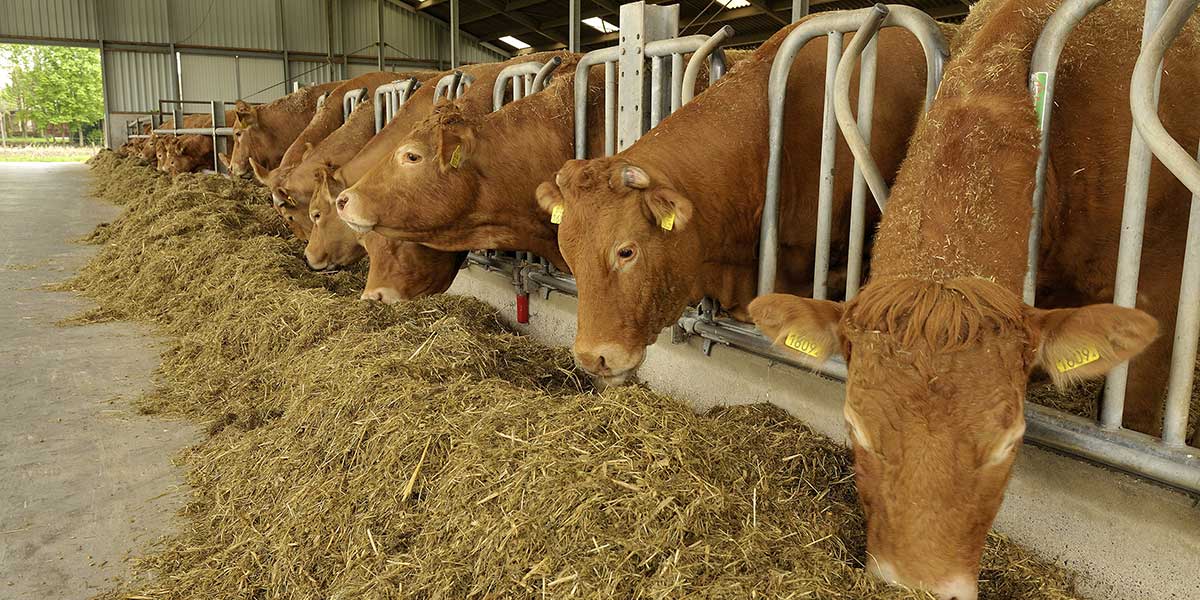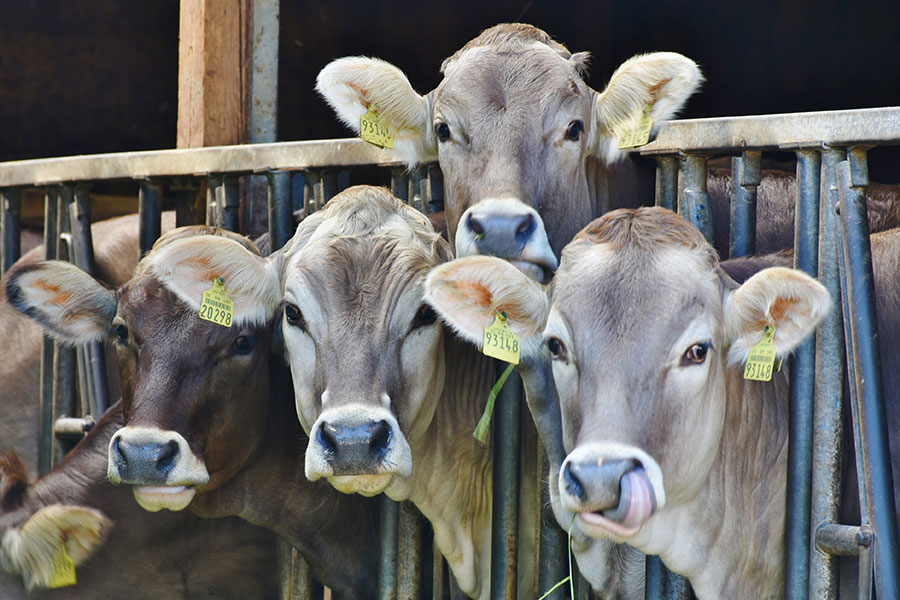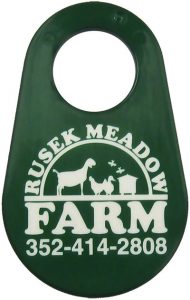A capacity for self-propelled locomotion being one of the hallmarks of what we define as “life,” it follows that keeping track of living things is by no means a simple task. Most creatures, including human beings, are curious by nature, and our innate wanderlust is a manifestation of that curiosity. It’s what has spread our species to every (habitable and not so habitable) corner of the globe, and so we have devised a complicated system of paperwork and documentation to make sure that people are who, what, and where they say they are. Think of I.D. cards, passports, and such as livestock tags for humans.
Our domesticated animals share that tendency to wander, and so they too are managed by us with methodologies by which we can identify and otherwise keep track of them. Livestock tags of various sorts have served this purpose quite handily for a great deal of our shared history. As livestock animals are typically pocketless (save for kangaroos and other marsupials), human-style I.D. cards won’t do. Nowadays, livestock are typically marked in some way, whether branded, tattooed, or adorned with a livestock tag around the neck or, more commonly, affixed to the ear; or, in the case of poultry, with leg bands or wing bands. Some animals are even managed with 21st-century technology, such as radio frequency I.D. (RFID) and subcutaneous microchips.
But why bother to tag animals at all? There are many reasons, but here are two of the most important:
1. Livestock Tags Cut Down on Theft or Loss
As mentioned previously, an unattended animal can hardly be expected to remain stationary. As smart as they may be, domesticated animals—be it a goat sniffing out a tasty patch of grass, a hog after some cool mud puddle in the shade, or the chicken seeking to cross the proverbial road—can easily lose their way and find themselves unable to return home even if they wish to. This leaves them open to a variety of dangerous if not lethal mishaps.
In another scenario, social animals such as cows might quite happily blend in with a different herd, especially if left to graze unsupervised. And while less common than in the heyday of the cattle rustlers of the old Wild West, the possibility of becoming the victim of the crime of cow theft cannot be dismissed outright.
Any livestock animal—whether cow, sheep, goat, pig, horse, llama, alpaca, or even cervids such as deer or elk—is vulnerable to loss, and near-impossible to track without proper livestock tags. Livestock tagging will enable you to claim your animals when they finally turn up, solve disputes when herds mix over grazing lands and, in the worst-case scenario, have a symbol and paper trail of ownership should an unscrupulous bovine-burglar, goat-grabber, sheep-snatcher, or pig-plucker try to make off with one of your animals and claim it as their own.
2. Livestock Tags Help Prevent and Monitor Herd Illnesses
Perhaps more importantly, livestock tags keep your animals healthy. In addition to tracking important biometric data, such as the animal’s breed and place of origin, much as a human passport confirms nationality and place of birth, livestock tags can also contain their vaccination history (a hot topic on everyone’s mind in the year of 2022!).
Though animal farmers and breeders do their best to keep their animals healthy, livestock living in groups are susceptible to viral, bacterial, or fungal illnesses that can spread through a herd or flock like wildfire. Livestock tagging provides precise data on which members of a herd have come down with a sickness, and is invaluable in quarantining exposed animals to prevent the spread of disease and keeping your other livestock safe. The methodical data management that livestock tags provide is absolutely necessary when dealing with an outbreak of quite serious and highly contagious diseases such as brucellosis, which can spread between animals of different species, including human beings.
When an animal gets sick and is isolated from the rest of the herd, its data can be easily gleaned from its livestock tag, as can the data from its herd-mates to monitor them for symptoms, or to isolate them from your other livestock. When the under-the-weather fellow does recover, its health history is recorded in a log book—and that livestock tag serves as an index to the health history of that specific animal, which has direct ramifications as to the ultimate fate of the animal.
Beyond this, the rabies vaccination status of a stray dog being prominently displayed is always important when it is encountered by a stranger or animal control professional, particularly if the dog displays unusually aggressive behavior.
The necessity to tag an animal with livestock tags is beyond dispute, but certainly there is choice regarding aesthetic and practical preference among the large selection of livestock tags produced by Ketchum Mfg. Co.









